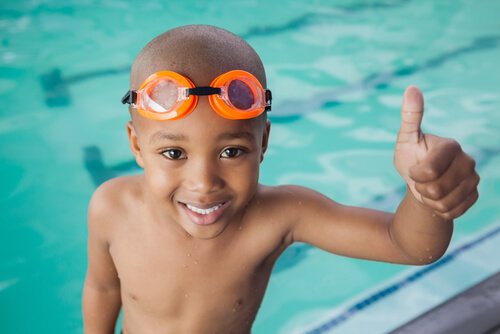As if the idea of drowning didn’t strike enough fear into the heart of every parent, recent news headlines and social media posts have brought a new term to the forefront… dry drowning. You might be thinking, “Well of course my kiddo has had a cough a time or two after their face inadvertently went into the water. Is this something to worry about?” Here is what parents need to know about so-called “dry drowning.”

What is dry drowning?
To get scientific, there are actually two entities here:
Dry drowning– This occurs when a small amount of water gets into the nose or mouth, and this water causes a sudden spasm of the airway where it shuts close. It is almost like the airway is “overprotecting” itself from the water that isn’t supposed to be there. With dry drowning, there is no water in the lungs. In these cases, you will see symptoms almost immediately after the water gets into the airway (the airway will not spasm if the water isn’t there).
Delayed or Secondary drowning– In delayed drowning, a child inhales a bit of water through their nose or mouth, and the water actually does make it down into their lungs. Once in the lungs, the water begins to cause significant irritation and inflammation (after all, water is not supposed to be in our lungs) which leads to something called pulmonary edema. This can occur anywhere from 1-24 hours after the initial inhaling of the water.
You can see that while these two terms mean something different from a medical standpoint, the term “dry drowning” is often used in the news headlines and on social media to refer to secondary drowning.
How common do these types of submersion injuries occur?
Good news…these are both UNcommon! It is estimated that either dry or secondary drowning probably accounts for only 1-2% of all drowning-related injuries in children. Think about all the times your child has inhaled a bit of water while in the bathtub or the pool, and the vast majority of the time, they are a-ok.
What are the symptoms?
Good news again…dry and secondary drowning do not occur without warning signs. When it comes to dry drowning, the symptoms will often be sudden in onset, and remember, they will occur at the time of the incident (like while they are still standing in the pool water). Children will have immediate coughing that doesn’t resolve and sudden difficulty breathing.
Now, with secondary drowning, the symptoms usually do not start immediately after they inhaled the water. It takes time for the inflammation to begin in the lungs. Rather kiddos will start with coughing, trouble breathing, faster breathing, fever, vomiting, extreme sleepiness or a drastic change in behavior anywhere from 1-24 hours later.

What should parents do if they suspect dry or secondary drowning?
If your child has been swimming and in the hours following a swim they show any of the above signs, they need to be brought to medical attention immediately. These symptoms certainly might end up being just the start of a circulating summer virus, but it is important to make sure that it is not secondary drowning. Often a good physical exam by your child’s doctor as well as checking of vital signs including their oxygen levels and sometimes even a chest x-ray can help to ensure that their lungs do not have fluid that shouldn’t be there.
And a quick reminder here as well…anytime a child has required a pool rescue of any kind, at a minimum, there needs to be a call to your child’s pediatrician. Depending on how long the child was under water, many of these kiddos also need to be evaluated by a medical professional.
How can you prevent dry or secondary drowning?
Both of these entities really fall on the spectrum of drowning-related injuries, and the best way to prevent any kind of drowning is constant adult supervision while swimming. I have written before about drowning prevention (you can click here to check out that blog post), but close attention to a child while they are in the water and vigilance for new onset of symptoms after a swim are key. And again remember, these dry or secondary drownings are NOT common.
So hopefully now that you understand these frightening terms of dry or secondary drowning, you will breathe a sigh of relief knowing that this does not happen commonly. Kiddos will be kiddos playing in the water which often means an inadvertent inward sniff while in the water. Let them continue to play, of course under an adult’s watchful eye, and if something doesn’t seem right after pool time is done, then you know the next step. Happy summer!
“Ask the Experts” is a series on Baton Rouge Family Fun where local experts share their thoughts, and opinions and answer questions relating to health, wellness, parenting, and living in Baton Rouge.
Disclaimer: The purpose of this site is to share BRM moms’ experiences with food, fitness, health and life as well as opinions from some of our local experts. This content is for informational purposes only and isn’t a substitute for professional medical advice. When it comes to your health or the health of your child, please be sure to contact your physician.



